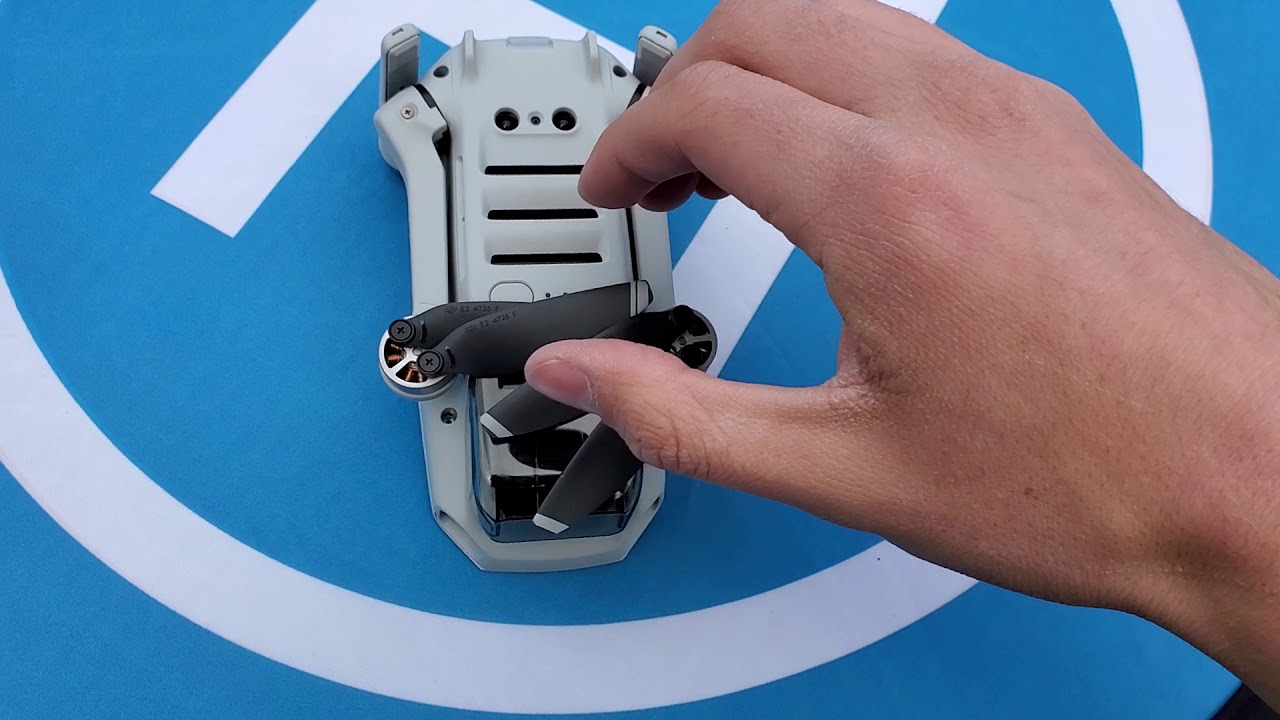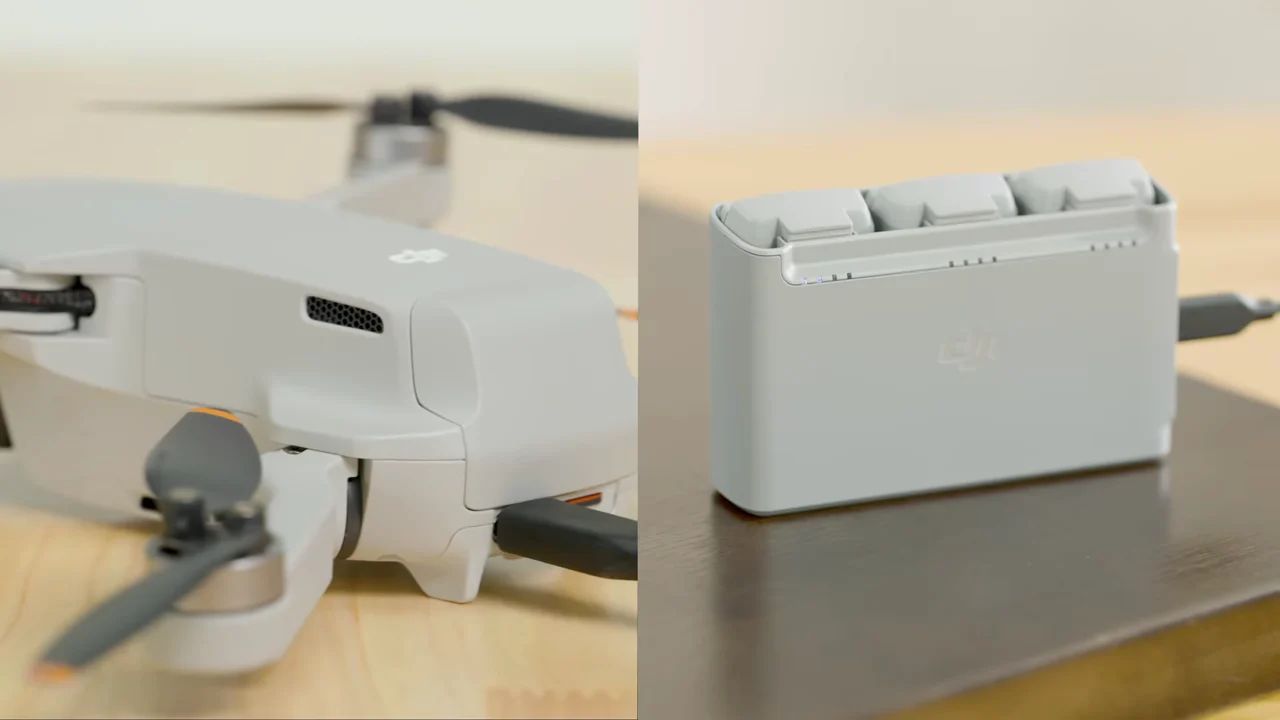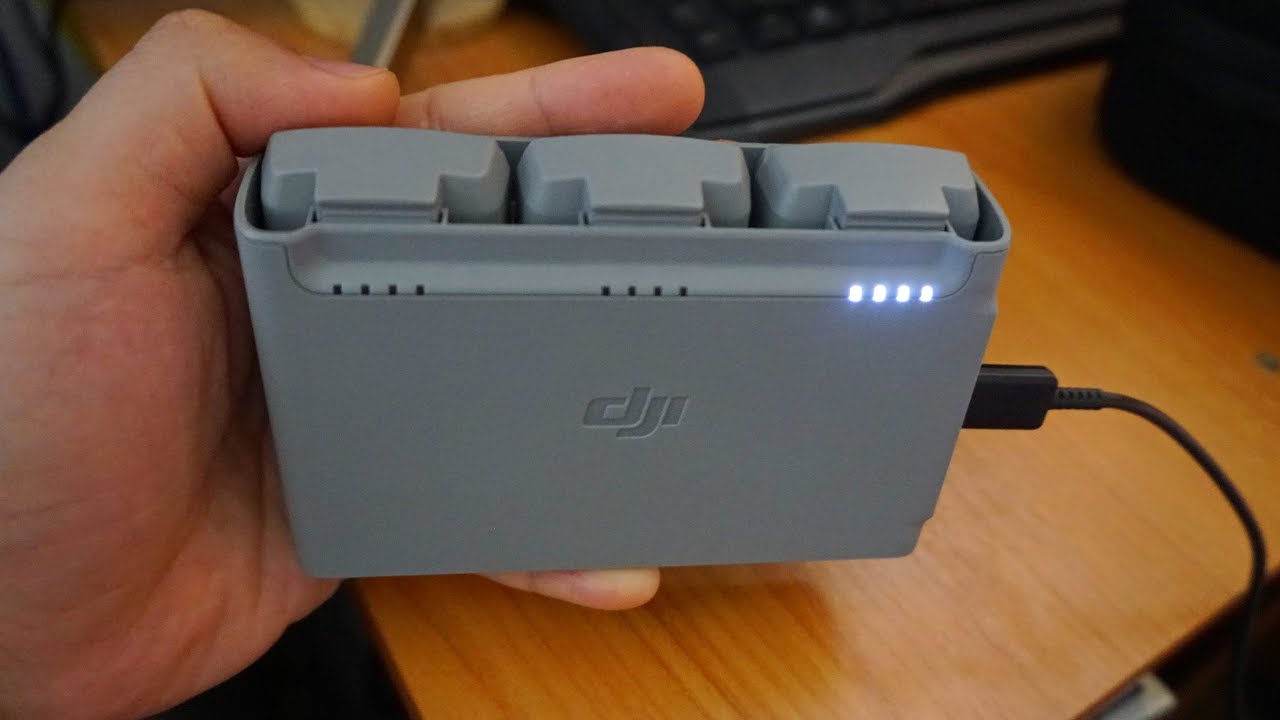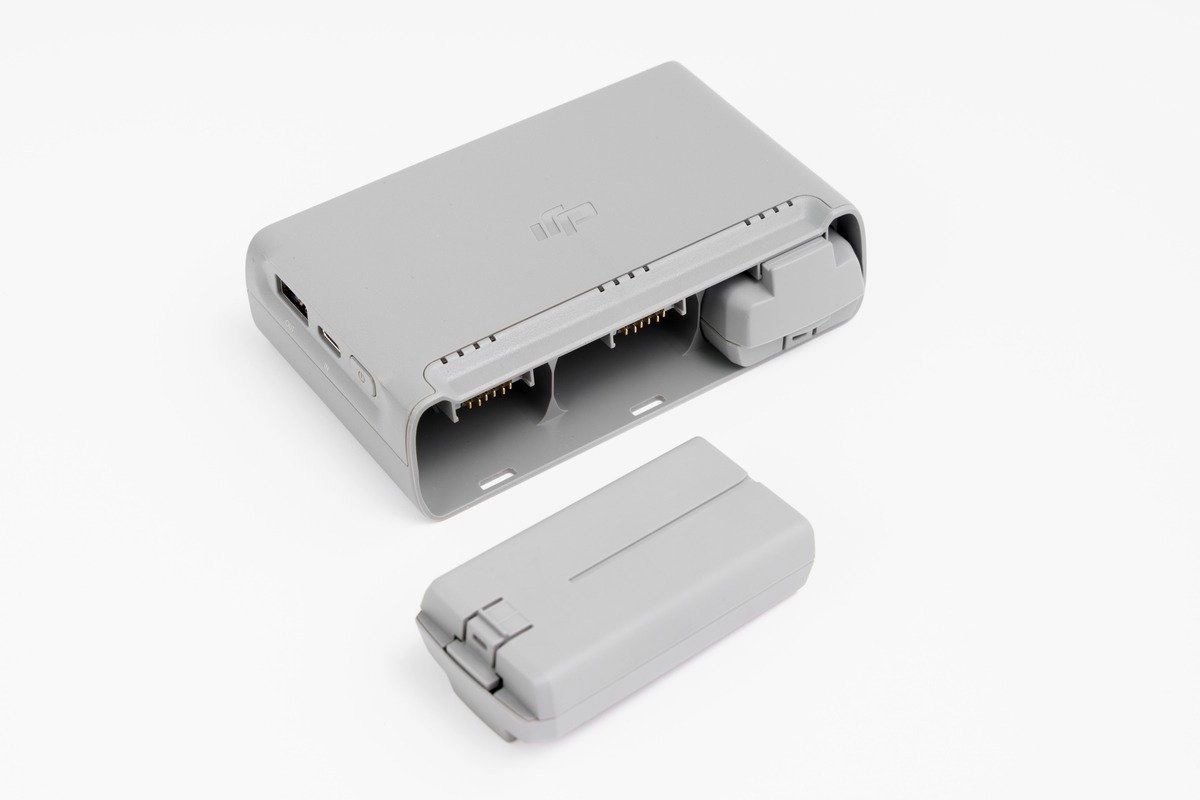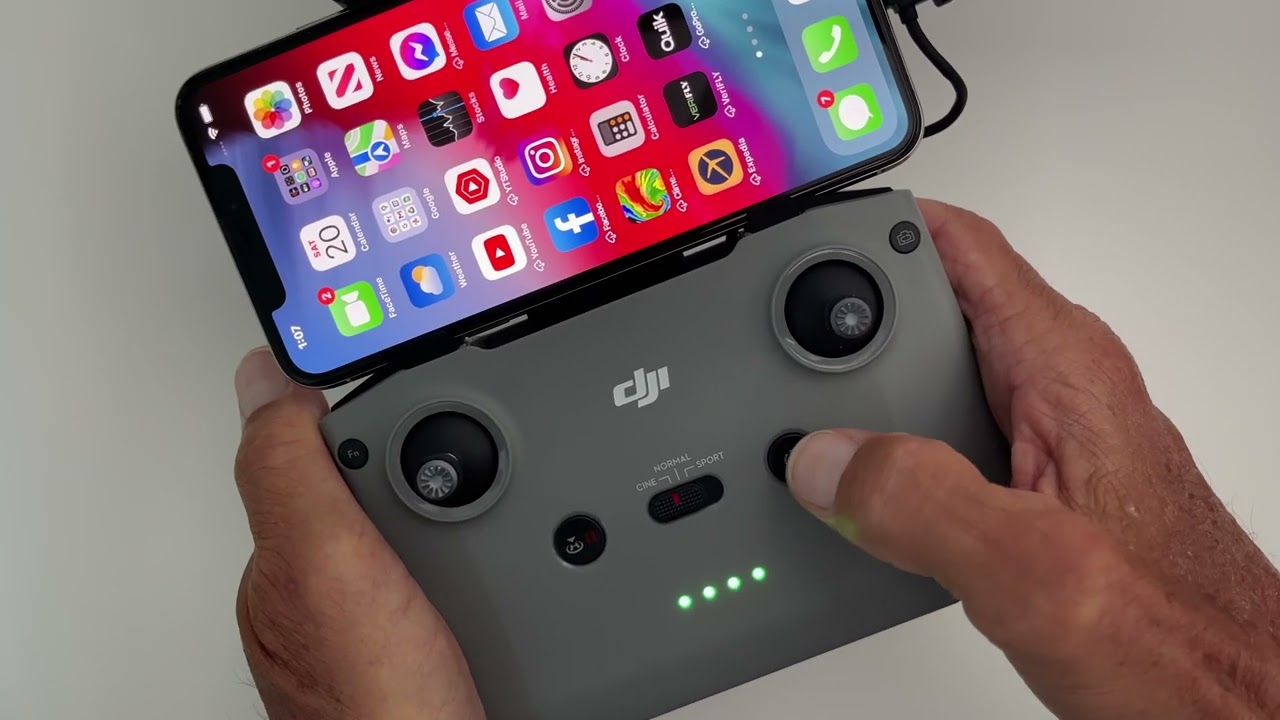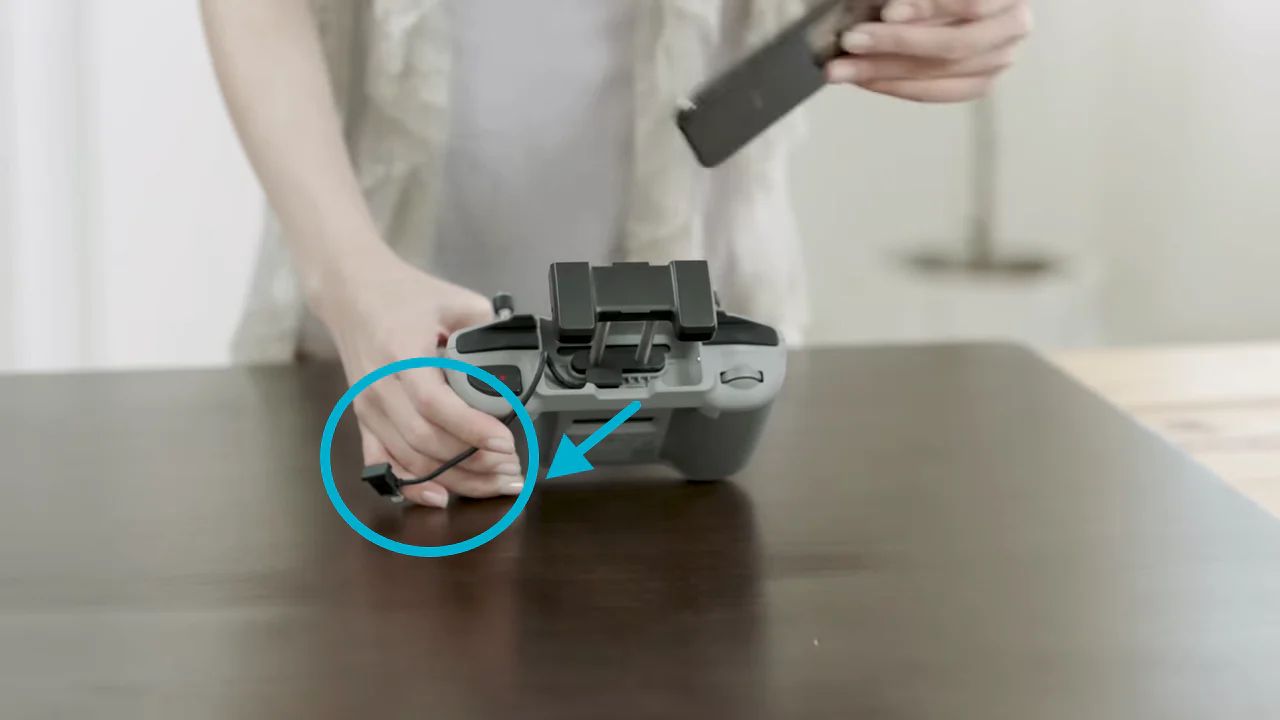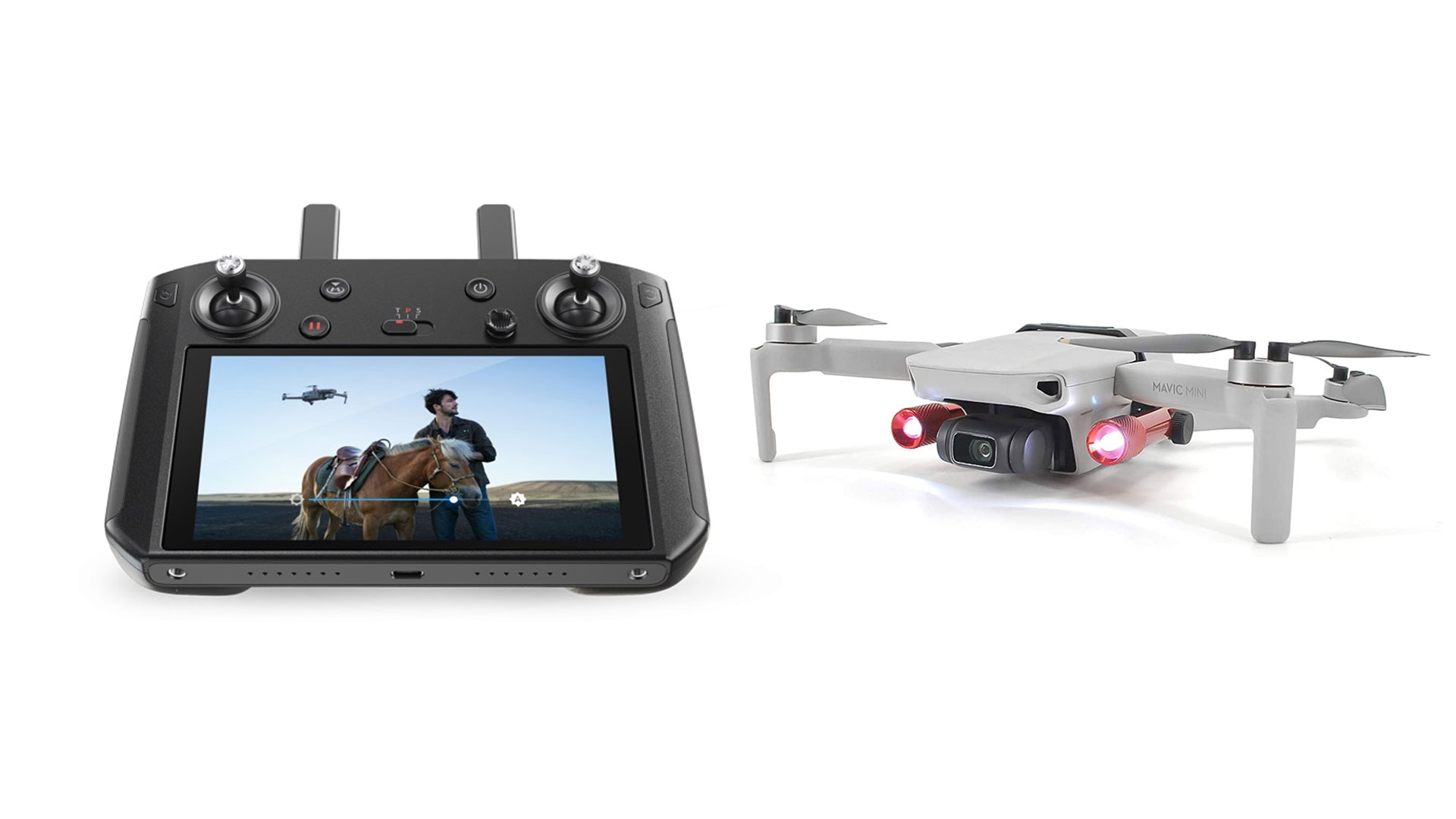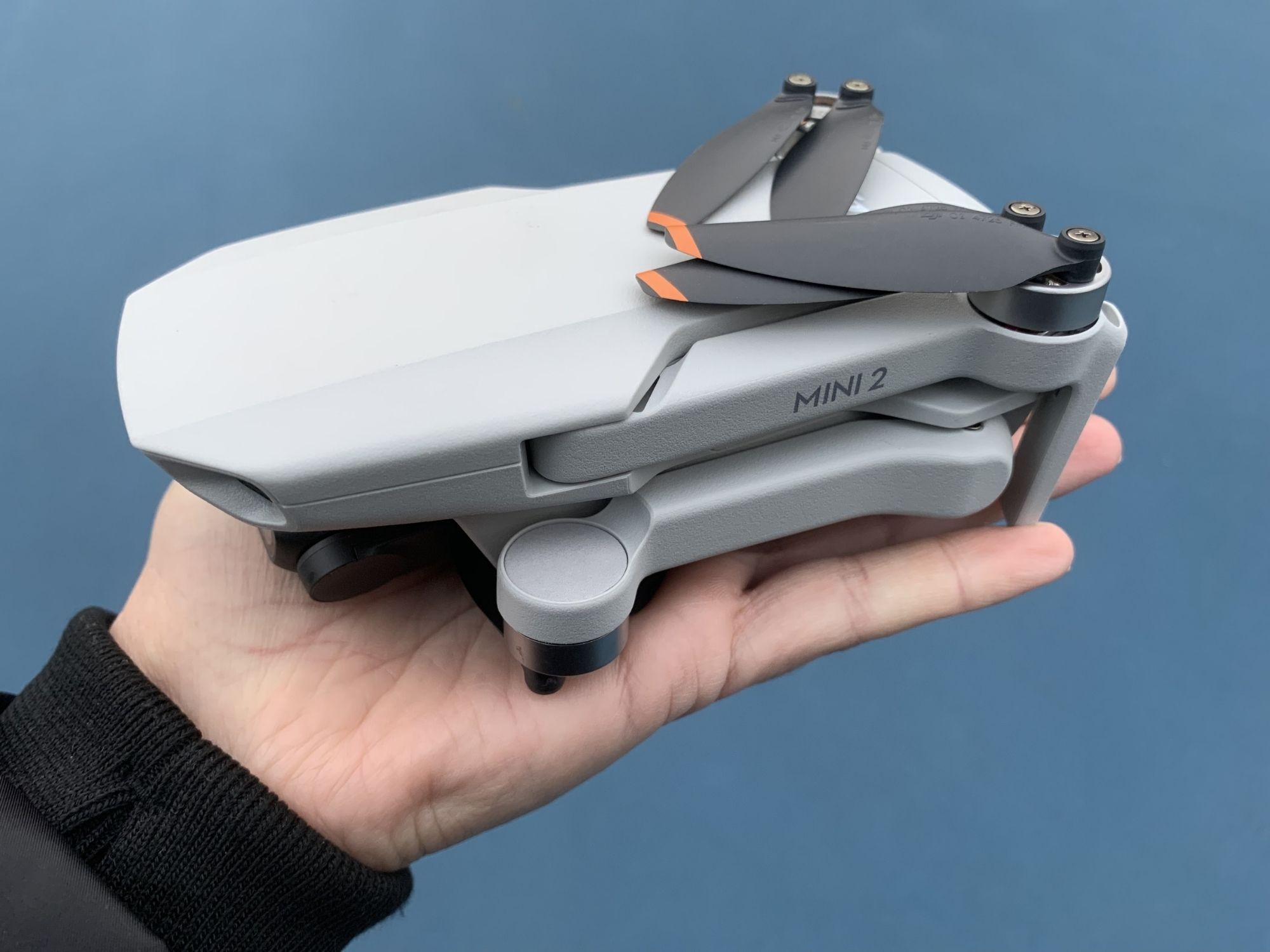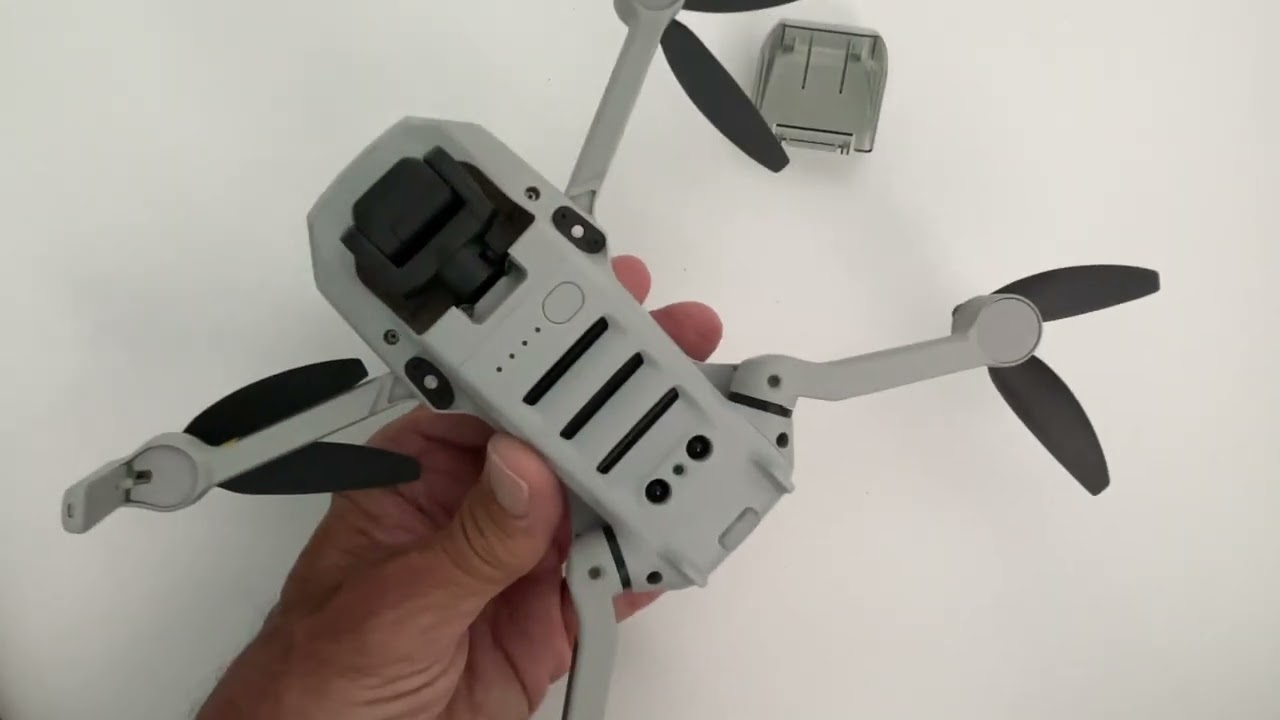Introduction
Welcome to the world of drone enthusiasts! If you’re a proud owner of the DJI Mini 2, you already know the joy of capturing breathtaking aerial footage and exploring new perspectives. As a valuable investment, it’s crucial to ensure that your DJI Mini 2 is stored properly to protect it from damage and ensure its longevity.
In this article, we will guide you through the best practices for storing your DJI Mini 2. Whether you’re a beginner or an experienced drone pilot, these tips will help you keep your drone in top condition and ready for your next flight.
Choosing the right storage solution, implementing cleaning and maintenance routines, avoiding common storage mistakes, protecting the drone during transportation, and ensuring battery safety are just a few of the topics we’ll cover. We’ll also provide tips for long-term storage and organizing your accessories and spare parts.
Remember, proper storage and maintenance are essential to extend the lifespan of your DJI Mini 2 and ensure its optimal performance. So, let’s dive in and learn how to store your DJI Mini 2 with care and precision.
Choosing the Right Storage Solution
When it comes to storing your DJI Mini 2, selecting the right storage solution is crucial. Here are some factors to consider:
- Hard Cases: Investing in a hard case specifically designed for your DJI Mini 2 is a wise choice. These cases offer durability and excellent protection against impact, dust, moisture, and other potential hazards. Look for a case with custom foam inserts that snugly fit your drone, controller, batteries, and other accessories.
- Soft Cases: If you prefer a lighter and more portable option, a soft case might be the right choice. Soft cases are usually made from durable materials like nylon or canvas. Look for a case with a padded interior to provide some level of protection against minor impacts and scratches.
- Drone Bags: Another popular option is a dedicated drone bag. These bags are designed with compartments and dividers to securely store your DJI Mini 2 and its accessories. They often come with adjustable straps for easy carrying during outdoor adventures.
- Wall Mounts and Shelves: For those who want to display their DJI Mini 2 or keep it within easy reach, wall mounts or shelves can be a practical storage solution. Make sure to choose sturdy mounts or shelves that can securely hold the weight of your drone.
Consider your specific needs, lifestyle, and storage space when choosing the right storage solution for your DJI Mini 2. Whether it’s a hard case, soft case, drone bag, or wall mount, prioritize protection, portability, and convenience to ensure ease of access and peace of mind.
Cleaning and Maintenance Tips
To keep your DJI Mini 2 in optimal condition, regular cleaning and maintenance are essential. Here are some tips to help you maintain your drone:
- Keep it Dust-Free: Dust and debris can affect the performance and longevity of your drone. After each flight, use a can of compressed air or a soft brush to remove any dust or dirt from the drone’s body, propellers, and camera lens.
- Wipe Down the Drone: Use a microfiber cloth dampened with water or a mild cleaning solution to wipe down the drone’s surface. Be gentle and avoid getting any liquid into the drone’s sensitive components.
- Check and Tighten Screws: Regularly inspect the screws on your DJI Mini 2 and ensure they are secure. Loose screws can affect the stability of the drone and increase the risk of damage during flights.
- Monitor Battery Health: The battery is a crucial component of your DJI Mini 2. Monitor the battery’s health and follow the recommended charging and storage guidelines provided by DJI. Avoid overcharging or completely draining the battery.
- Update Firmware: DJI regularly releases firmware updates for their drones. Stay up to date with the latest firmware to benefit from improved performance, stability, and new features.
- Store in a Clean and Dry Environment: When not in use, store your DJI Mini 2 in a clean and dry environment. Avoid storing it in extreme temperatures or humid conditions, as this can damage the drone’s internal components.
By following these cleaning and maintenance tips, you can ensure that your DJI Mini 2 remains in top condition and ready for your next adventure.
Avoiding Common Storage Mistakes
Proper storage of your DJI Mini 2 is essential to protect it from potential damage. Here are some common storage mistakes to avoid:
- Leaving the Battery Fully Charged: It’s a common misconception that keeping the battery fully charged during storage is beneficial. However, this can actually lead to decreased battery performance over time. Instead, discharge the battery to around 40-60% before storing it.
- Not Removing the Propellers: It’s important to remove the propellers when storing your DJI Mini 2. This prevents them from accidentally spinning or getting damaged during transportation or while the drone is at rest.
- Ignoring Firmware Updates: Firmware updates are crucial for maintaining the performance and stability of your drone. Neglecting these updates may result in compatibility issues or missed enhancements. Regularly check for firmware updates and install them as recommended.
- Storing in Extreme Temperatures: Extreme temperatures, whether hot or cold, can cause damage to your DJI Mini 2. Avoid storing it in environments with wide temperature fluctuations or above the recommended operating temperature range.
- Exposing to Moisture: Moisture can wreak havoc on electronic devices like drones. Ensure you store your DJI Mini 2 in a dry environment, and avoid exposing it to rain, high humidity, or condensation.
- Not Checking for Damage: Before storing your drone, carefully inspect it for any signs of damage or wear. Make sure the propellers are in good condition, the body is intact, and the camera lens is clean. Address any issues before storing the drone to prevent further damage.
By avoiding these common storage mistakes, you can ensure that your DJI Mini 2 remains in optimal condition and ready for your next flight.
Protecting the DJI Mini 2 During Transport
Transporting your DJI Mini 2 safely is essential to prevent any damage during travel. Here are some tips to protect your drone during transportation:
- Use a Dedicated Drone Bag or Case: Invest in a quality drone bag or case that is specifically designed to protect and secure your DJI Mini 2 during transport. Look for a bag with padded compartments and dividers to keep each component in place.
- Secure the Propellers: When packing your drone, make sure to remove and securely pack the propellers. Use a propeller guard or small bag to prevent them from getting bent, damaged, or causing harm to other components.
- Protect the Gimbal: The gimbal is a delicate and crucial part of your DJI Mini 2. Use a gimbal protector or ensure that it is securely placed and protected within the bag or case to prevent it from being bumped or scratched during transport.
- Consider a Hardshell Case: If you anticipate rough or bumpy transportation, consider using a hardshell case. These cases provide extra protection against impact and ensure that your drone remains safe even in challenging situations.
- Secure the Controller and Accessories: Ensure that the controller and accessories like spare batteries, charging cables, and memory cards are securely stored and won’t move around during transport. Use dedicated compartments or small pouches to keep everything organized and protected.
- Avoid Overpacking: While it’s important to protect your drone, avoid overpacking the bag or case. Overcrowding can lead to pressure on delicate components and increase the risk of damage. Give each item enough space to prevent any unwanted pressure or impact.
By taking these precautions and using a suitable transport solution, you can safeguard your DJI Mini 2 from potential damage and ensure a worry-free journey to your next flying location.
Tips for Long-Term Storage
If you plan on storing your DJI Mini 2 for an extended period, here are some tips to ensure it remains in excellent condition and ready for future use:
- Clean and Dry the Drone: Before storing your DJI Mini 2, make sure it is clean and dry. Remove any dust or dirt with a soft brush or compressed air and wipe it down gently with a microfiber cloth. Ensure that there is no moisture on the drone’s surface.
- Discharge the Battery: If you won’t be using your drone for an extended period, it’s advisable to discharge the battery to around 40-60%. Storing a fully charged or completely drained battery for a long time can lead to battery degradation.
- Remove the Battery: If you’re storing the DJI Mini 2 for a prolonged period, remove the battery from the drone. This prevents the battery from draining or potentially leaking and causing damage to the drone.
- Keep in a Cool, Dry, and Dark Place: Find a storage location that is cool, dry, and away from direct sunlight. Exposure to extreme temperatures or prolonged sunlight can damage the drone’s internal components and battery.
- Protect from Dust and Moisture: To protect your DJI Mini 2 from dust and moisture, place it in a protective bag or case. This will help minimize the risk of damage caused by these elements during long-term storage.
- Check and Update Firmware: In the event that DJI releases firmware updates during the storage period, periodically check for updates and install them if necessary. This will ensure that your drone remains compatible with the latest features and improvements.
By following these tips, your DJI Mini 2 will remain in optimal condition and be ready for action whenever you’re ready to take it out of storage.
Organizing Accessories and Spare Parts
Keeping your accessories and spare parts organized is essential for easy access and to prevent loss or damage. Here are some tips to help you effectively organize your DJI Mini 2 accessories:
- Use Dedicated Storage Solutions: Invest in storage solutions specifically designed for drone accessories. Look for cases or organizers with compartments, dividers, and pockets to keep everything neatly organized.
- Label and Categorize: Use labels or color-coded tags to identify different accessories and spare parts. Categorize them based on their function, such as propellers, batteries, charging cables, or memory cards. This will make it easier to locate and retrieve specific items.
- Separate Small Parts: Use small containers, like pill organizers or small ziplock bags, to store small parts such as screws, memory card adapters, or USB adapters. This prevents them from getting lost or mixed up with other items.
- Keep Manuals and Documentation: Maintain a dedicated folder for the drone’s user manual, warranty information, and any other documentation. This ensures that you can easily reference important instructions or contact information when needed.
- Create a Checklist: Develop a checklist of all the accessories and spare parts that should be present. This will help you keep track of items and ensure that nothing is missing or left behind.
- Securely Store Cables: Use cable management solutions, such as Velcro ties or cable clips, to keep charging cables and other wires organized and tangle-free. This will make it easier to find the right cable when needed.
By implementing these organization tips, you’ll have a well-structured system for storing and accessing your DJI Mini 2 accessories and spare parts. This will save you time and frustration, allowing you to focus on capturing stunning aerial footage and enjoying your drone flying experience.
Ensuring Battery Safety
Proper handling and care of the DJI Mini 2’s batteries are essential for both their lifespan and safety. Here are some tips to ensure battery safety:
- Follow Charging Guidelines: Always use the provided charger or a DJI-approved charging device to charge your drone’s batteries. Avoid using third-party chargers, as they may not have the necessary safety features or charging capabilities.
- Avoid Overcharging: Do not leave the batteries connected to the charger for an extended period. Once the battery is fully charged, disconnect it from the charger promptly to prevent overcharging, which can lead to battery degradation or even pose safety hazards.
- Store at Optimal Voltage: If you’re storing the drone for a longer period, ensure that the batteries are stored at approximately 40-60% charge. Storing them completely discharged or fully charged can lead to performance degradation or even render the battery unusable.
- Check for Damaged Batteries: Regularly inspect the batteries for any signs of damage, swelling, or leakage. If you notice any abnormalities, stop using the battery immediately and follow proper disposal procedures.
- Avoid Extreme Temperatures: Exposing the batteries to extreme temperatures, especially high heat, can adversely affect their performance and safety. Avoid storing or using the drone in locations with extreme temperatures and keep the batteries within the recommended temperature range.
- Transport Safely: When transporting your DJI Mini 2 or spare batteries, ensure they are stored in the battery safety bags provided by DJI. These bags are designed to contain any potential fire or thermal events that may occur during transportation.
- Turn Off the Drone Before Removing or Inserting Batteries: Always turn off the drone before removing or inserting batteries to prevent accidental power surges or damage to the electrical components.
By adhering to these battery safety practices, you can maintain the longevity and safety of the batteries for your DJI Mini 2. Always prioritize safety when handling and charging the batteries, as it is crucial for a smooth and enjoyable drone flying experience.
Conclusion
Proper storage is essential to protect the DJI Mini 2 and ensure its longevity. By choosing the right storage solution, implementing regular cleaning and maintenance routines, avoiding common storage mistakes, protecting the drone during transport, and organizing accessories and spare parts, you can ensure that your DJI Mini 2 remains in top condition and ready for your next flight.
Remember to select a storage solution that best suits your needs, whether it’s a hard case, soft case, drone bag, or wall mount. Take the time to clean and maintain your drone after every flight to keep it dust-free and in optimal condition. Avoid common storage mistakes such as leaving the battery fully charged or not removing the propellers before storing the drone.
When transporting your DJI Mini 2, protect it from potential damage by using a dedicated drone bag or case, securing the propellers, and being mindful of the gimbal’s delicate nature. Properly organizing accessories and spare parts will ensure easy access and prevent loss or damage. And, of course, always prioritize battery safety by following charging guidelines, avoiding overcharging, and storing batteries at the optimal voltage.
By following these storage tips, you can keep your DJI Mini 2 safe and ready for action whenever you’re ready to take it out for another thrilling flight. So, take the necessary steps to store your DJI Mini 2 properly and enjoy many exciting drone adventures in the days to come.







